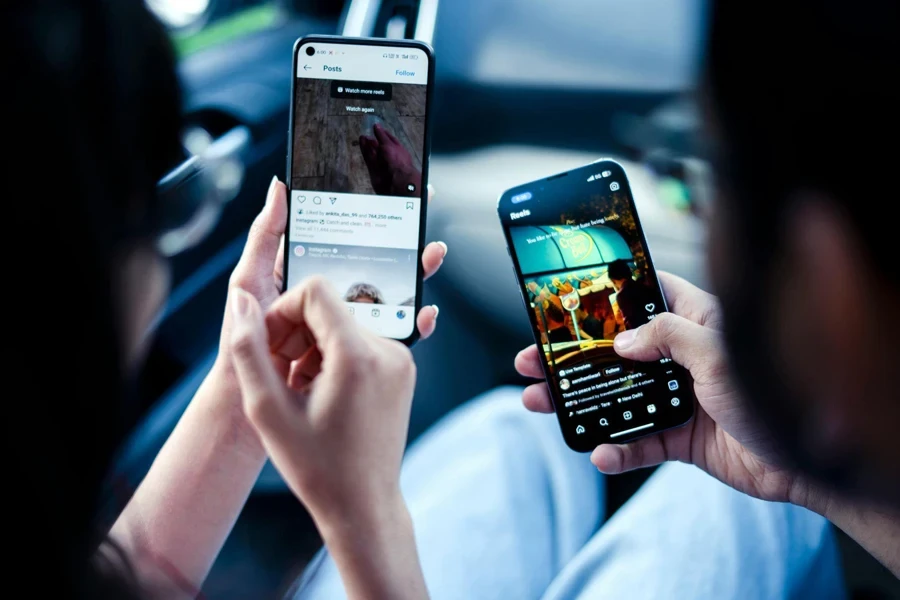Social media brand storytelling is essential for businesses seeking deeper audience engagement. A consistent narrative to convey your brand’s beliefs, purpose, and journey helps buyers engage emotionally.
Effective narrative increases engagement, loyalty, and trust on social media when attention is limited. Brand storytelling, whether through original stories or user-generated content, is essential for sticking out in a crowded market.
Discover four creative and engaging ways to tell your brand’s story on social media in 2025.
Table of Contents
Key elements of a compelling brand story
Platforms for social media storytelling
Tools and strategies for brand storytelling
Summary
Key elements of a compelling brand story

Being real, personable, and transparent about the company’s principles makes a brand story captivating. These days, buyers want to buy from trustworthy brands, so businesses must be honest about their views and actions. Honest brands gain customer trust and loyalty.
Emotional connection is also important. Any narrative that evokes joy, empathy, or excitement will likely be remembered. Create an emotional brand story to connect with your audience on a deeper level.
Consistency across platforms strengthens your messaging. Your brand’s narrative should be consistent online, in-store, and on social media. This consistency will strengthen your brand’s identity and recognition.
Finally, your brand’s mission and values define its uniqueness. You can recruit and retain like-minded people by clearly communicating your values and mission in your narrative.
Platforms for social media storytelling

1. Facebook for narrative posts and community engagement
Brands have traditionally used Facebook for sophisticated storytelling. Facebook’s long-form postings, photos, and videos make it ideal for story-driven content. Brands may provide detailed stories like product journeys and behind-the-scenes footage to connect with their audience.
By allowing people with similar interests to interact, share content, and become brand ambassadors, Facebook Groups may drive community participation.
The site’s algorithms value participation, so postings that inspire debate, questions, or shares can enhance a brand’s visibility. Facebook allows advertisers to build long-term relationships by sharing touching customer stories or contributing in real-time comments.
2. Instagram for visual storytelling and reels

Due to its visual-first orientation, Instagram is great for brand storytelling. Brands may create visually engaging content with Reels, Stories, and pictures. Because the platform values aesthetics, brands should evaluate how their visuals convey their message. A cohesive story requires high-quality photos, engaging subtitles, and intriguing video.
Instagram Stories and Reels let you highlight new products, brand events, or community content in brief, captivating pieces. Reels raise discoverability, allowing more people to view brands’ unique short-form content. Polls, questions, and stickers can engage followers and include them in your brand story.
Instagram excels at marketing communication because it makes your message more relatable. Showing the people behind the firm, sharing customer success stories, or revealing planned projects can help you connect with your audience.
3. X (formerly Twitter) for conversational and timely posts
Be brief on X. Engaging and relevant content makes the platform’s short-form updates shine. X is ideal for brands with concise, impactful messaging. Because participation is swift, this medium is perfect for real-time conversations, live information, and quick thoughts on popular topics.
X lets brands create a unique voice—informative, hilarious, or authoritative—and interact with followers by retweeting, commenting, and quoting. The platform’s lightning-fast pace makes newsjacking—linking your brand’s story to current events—easy.
X is for companies that love one-on-one client conversations. You can ask questions and get immediate responses or join larger discussions. X’s Threads feature lets organizations tell lengthier stories while maintaining the platform’s conversational tone.
4. LinkedIn for professional stories and case studies
LinkedIn is ideal for case studies, thought leadership, and industry insights because of its professional audience. Leadership-seeking brands use LinkedIn to show themselves more professionally.
Case studies and success stories demonstrate your brand’s sector expertise and impact here. By delivering instructional and interesting material, your brand may become a trusted resource for LinkedIn users looking for solutions or professional development.
LinkedIn’s ability to boost networking and professional interaction is a further benefit. Your brand can gain reputation and network size by engaging in industry debates, sharing insights, and conversing with experts. Brands can use LinkedIn’s long-form articles to tell stories more thoroughly than on X or Instagram.
5. TikTok for short-form and viral content
TikTok’s phenomenal rise, especially among younger populations, makes it ideal for viral narratives. Since the app’s algorithm pushes viral videos to massive audiences, brands may reach millions with short-form videos.
Brand stories on TikTok can be casual and lighter, allowing for more creativity and authenticity. TikTok culture values teamwork and content remixing, so joining trends, challenges, and viral moments can work.
Brands can encourage followers to participate in contests, create unique content based on a brand’s theme, and share their stories with their communities, maximizing the platform’s user-generated content potential.
TikTok’s algorithm promotes content based on engagement rather than follower count, helping smaller companies go viral. Businesses could use TikTok to reach younger, more active consumers.
Tools and strategies for brand storytelling

Here are solid hacks for brand storytelling via social media:
Crafting an authentic brand narrative
Due to the great deal of content and ads, modern consumers are skeptical of anything artificial or unauthentic. Genuineness and openness are essential online. Consumers desire true stories about a company’s ups and downs, values, and humanity.
Sharing your brand’s origins helps build that relationship. Learning about the founder’s story, their challenges, and the brand’s evolution helps customers understand the product. Tell stories about how your company was founded by meeting a need or overcoming hardship. A personal, believable story will resonate with others. Consumers invest in commodities and tales.
UGC enhances your brand’s story. Customers trust peer-to-peer stories more than brand-sponsored ones. Sharing community stories, real-life experiences, and consumer testimonials can increase trustworthiness.
To encourage user-generated content, host a contest to share customer stories or invite followers to explain how they use your product.
Utilizing visual storytelling for optimal impact

Visuals are being used in social media brand storytelling. Pictures, movies, and infographics may quickly convey complex ideas in an age with short attention spans. Infographics make data-driven insights easy to understand. Infographics may visually engage and simplify information, whether showing facts or explaining a complex concept.
Videos are also useful. Thanks to Instagram Reels, YouTube Shorts, and TikTok, brands can leave a lasting impression with short films. Videos add a human touch to your brand and better convey emotions and tone than still photographs.
Images are crucial to stories. Showing photos from events, product demos, or behind-the-scenes content shows your brand’s universe. Improves familiarity and confidence. Beautiful photographs work on Instagram and Pinterest, while instructional and lengthier movies work on YouTube.
Interactive visuals like live movies, polls, and quizzes can boost interest. Issuing questions or inviting viewers to live video sessions can make your Instagram Stories more personal and interactive.
Building emotional connections through storytelling
A compelling brand narrative is emotional. Stories can inspire delight, understanding, trust, and nostalgia. Build enduring relationships with your audience by making them feel something through your content.
Brands can engage with people emotionally by telling triumphant stories, solving common problems, or honoring historic milestones. Telling the stories of delighted consumers and how your product has improved their lives may acquire their trust and sympathy. Important stories or memories can also bring joy.
There are many platforms for emotional bonding. In contrast to Facebook’s nostalgic long-form posts and memories, LinkedIn would highlight professional success stories. Make sure your emotive content uses each site’s features.
Real-life movements and events can help companies connect with their audience. Joining global movements like sustainability or social justice might help you find clients who share your values.
Engaging your audience through interactive storytelling
Interaction is key to social media success. Interactive storytelling helps followers remember your brand and feel more connected to your organization.
Tell an engaging story to engage and involve your audience. Instagram Stories, X polls, and surveys let users create content that connects them to your organization. Freebies and contests stimulate user-generated content and let your audience share their experiences, which engages them.
Live Q&A sessions are another great method to include your audience in the discourse. These events will allow customers to ask questions and share feedback, encouraging direct involvement. In addition, you may develop brand-centered communities on Reddit or Facebook Groups to keep consumers interested and loyal.
Branded hashtags and challenges boost engagement. Use #ShareACoke and #JustDoIt to inspire brand-story material. Posting a challenge to your audience gets them interested in spreading your message.
Summary
Sharing a great company story on social media is more important than ever. Posting honestly is best since your audience wants to see you as you are. Share your ups and downs, problems, and successes to connect with the audience.
There are many ways to tell your story. Polls, contests, and live sessions are great methods to engage your audience on Instagram and TikTok, which have amazing visual storytelling. Your brand’s story should be distinctive and relatable.




